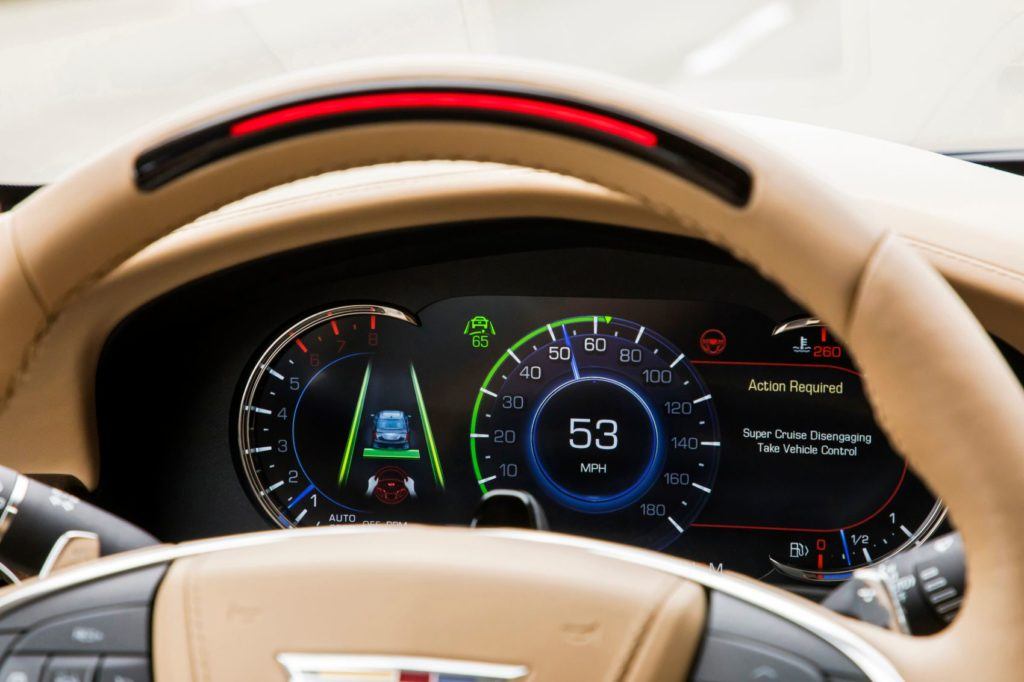“One of the challenges in ADAS technology has been in ignoring the driver. We put a lot of work into the outside environment, but we now need to turn inward to the driver.”
Howard Abbey, an Autonomous Car Specialist at SBD Automotive, shared this driver-centric idea during the May edition of AutoSensONLINE. The statement was in response to the big question (and title of his webinar), “How Can Consumers Understand the Difference Between Assisted and Autonomous Driving?” Abbey and SBD Automotive turned their research towards the person in the driver’s seat and keyed in on what confuses and frustrates consumers about ADAS systems. From this research, a list of five ways to increase customer understanding and adoption of ADAS technology quickly emerged.
We will cover these five key takeaways from Abbey’s presentation below.
#1: Design Out Potential Misuse
Common ADAS systems today, like parking assist, help drivers navigate busy cities and ease anxiety when it comes to parallel parking. A familiar system, the proper use case seems clear: the driver monitors while the car uses its sensors to park the vehicle. However, as Abbey expressed diplomatically, “Users will push limits beyond what is reasonably considered safe.”
To accompany this statement, Abbey showed a video of a person squeezing through the window of his car with the parking assist engaged. Once this person was clear of the window, he stepped back to casually watch the car park itself. The vehicle did park itself, minus the driver, but it brings up other cases of misuse as it concerns other systems – ones in use at higher speeds. A common misuse is the “Look! No hands” approach where a driver uses features like lane keeping assist and adaptive cruise control to demonstrate how their car can “drive itself.”
To counteract this type of misuse, driver attention warnings in a TFT cluster or other similar display can encourage users to place their hands back on the wheel, or pay more attention to their surroundings. The driver attention warnings employed by Cadiallc’s Super Cruise are a prime example of this in action.
In a similar fashion, adding system checks like a seat weight or safety belt sensor could discourage or even prevent situations like Abbey showed in his video. The instant the driver’s seat is empty, the weight sensor could notify the vehicle to cease the operation of features like park assist.
“That is one example of how systems could be adjusted to help clarify what is assistance and what is autonomous for a certain class of users,” Abbey said.

#2: Use Common Naming
ADAS systems which do the same job, typically, do not share the same name. This inconsistency generates confusion for drivers trying to understand or compare ADAS technology. The concern is when a consumer researches their next vehicle and doesn’t know how to compare ADAS systems. Along with fuel economy and price, safety features are one of the most important considerations. With inconsistent terms, it might be a struggle for the customer to find the information they need and make a proper comparison between manufacturers.
“We can’t expect users to refer to a decoder ring or an index book,” Abbey explained. “When an user investigates another brand of car, their experience is made nearly worthless because of the terms selected by car makers.”
The scope of confusion comes into sharp focus when we look at all the numbers across the board. Emergency braking is the most prevalent at over a 100 different names among OEMs. Lane departure warning and adaptive cruise control are not far behind at 77 and 66 unique terms respectively. Blind spot monitoring has another 57.
Progress has been made on this issue by SAE International, AAA, Consumer Reports, J.D. Power, and the National Safety Council. Together, the groups have published Clearing the Confusion: Recommended Common Naming for Advanced Driver Assistance Technologies. The published work and public safety initiative is aimed at standardizing common names for ADAS systems. The organizations are working together to properly educate consumers on the different ADAS features currently on the market.
“With advanced safety technologies being added to new vehicles every year, we recognize that it’s important that consumers understand the technologies they are using and common descriptions can help,” explained Chad Zagorski, Chair of the SAE International Active Safety Systems Standards Committee. “Educating drivers on key terms such as ‘Lane Keeping Assistance’ and ‘Automatic Emergency Braking’ helps drivers have consistent expectations and awareness of the functionality of their vehicle’s Advanced Driver Assistance Systems.”

#3: Be Clear
How can we introduce ADAS systems without interfering with the driving experience? While the environment outside the car is important, what considerations should we have for the person who is supposed to interact with these systems on a daily basis? In addition to establishing a common nomenclature, how the driver interacts with and engages ADAS technology is of equal importance. The goal is to help the driver, not hinder them, which is not as simple as the term “assisted driving” implies.
SBD Automotive did a study on how drivers interact with HMI systems. SBD assigned tasks to drivers, like using parking assist or adaptive cruise control. They then collected quantitative data which measured the relative difficulty of each system by analyzing the amount of time it took the driver to complete the task. At the same time, the study also accounted for the mental workload of each participant (by monitoring things like eye pupil dilation).
The data became most helpful when they compared task times and mental strain between other vehicles, demonstrating a marked difference between different HMI systems. By understanding which systems were more demanding of the driver, SBD found three issues that interfere with the customer’s understanding of ADAS: confusing display graphics, unclear systems statuses, and inconsistent icons.
Currently, a driver must understand which system to engage, how to engage it, and then understand what that specific system is communicating back to them. With the clutter of buttons, icons and on-screen menus, it could be difficult for drivers to effectively (and safely) use today’s ADAS features.

#4: Unify Systems
Abbey and other industry experts believe ADAS systems should be simplified or combined wherever possible. As advanced safety features become more plentiful and commonplace, buyers start to see (and then must choose) between seemingly identical systems while driving. This idea of a simplified architecture for ADAS technology builds on the logic of using common naming as discussed in previous points. Common naming in unison with clear HMI controls can take stress off the driver. Many experts in the ADAS community believe this is a critical step when it comes to consumer adoption.
During his presentation, Abbey used the example of BMW’s distance control (adaptive cruise control), along with the brand’s other steering and lane control systems which share a mode button between them. In this current setup, it could be hard for drivers to determine the difference and which one is best suited to the conditions. If a driver is debating or wondering how the systems work, they are not focused on the road.
“Systems should be designed and implemented more holistically,” Abbey said. “The vehicle should take care of the complexity for the user.”
#5: Give Simple Choice
A holistic approach, in this instance, means combining current ADAS technologies to create one, comprehensive system that works together behind the scenes. By taking away the pluralism, consumers can bypass the confusion. Instead of trying to understand every technical element and individual aspect of the ADAS systems in their car, they can focus on the task of driving at hand.
“There is no need for cruise control, automated cruise control, and traffic jam assist,” Abbey explained. “These are just more controls which mean nothing to the user. The user needs to focus on the environment and driving, not on the many different controls.”
Abbey recommends two to three modes during his presentation: either the user is driving, or the user and the car, or just the car. Modes one and two could, arguably, be introduced now while a third mode could come later when Level 4 arrives.
The Value of New Data & Insights
Sometimes it might seem like there are more challenges than solutions, especially as we dive deeper into the above points. However, we now have more quantitative data to confirm these are real issues. As experts in our ADAS community bring forward new information and observations, we can continue working to evolve autonomous systems for mass adoption.
A recent Partners for Automated Vehicle Education study showed how having daily interaction with some form of ADAS increases both comfort and interest levels in advanced safety technologies. By working diligently to further improve the driver’s experience with ADAS technology, we can increase trust which is closely (hopefully) followed by consumer adoption.


